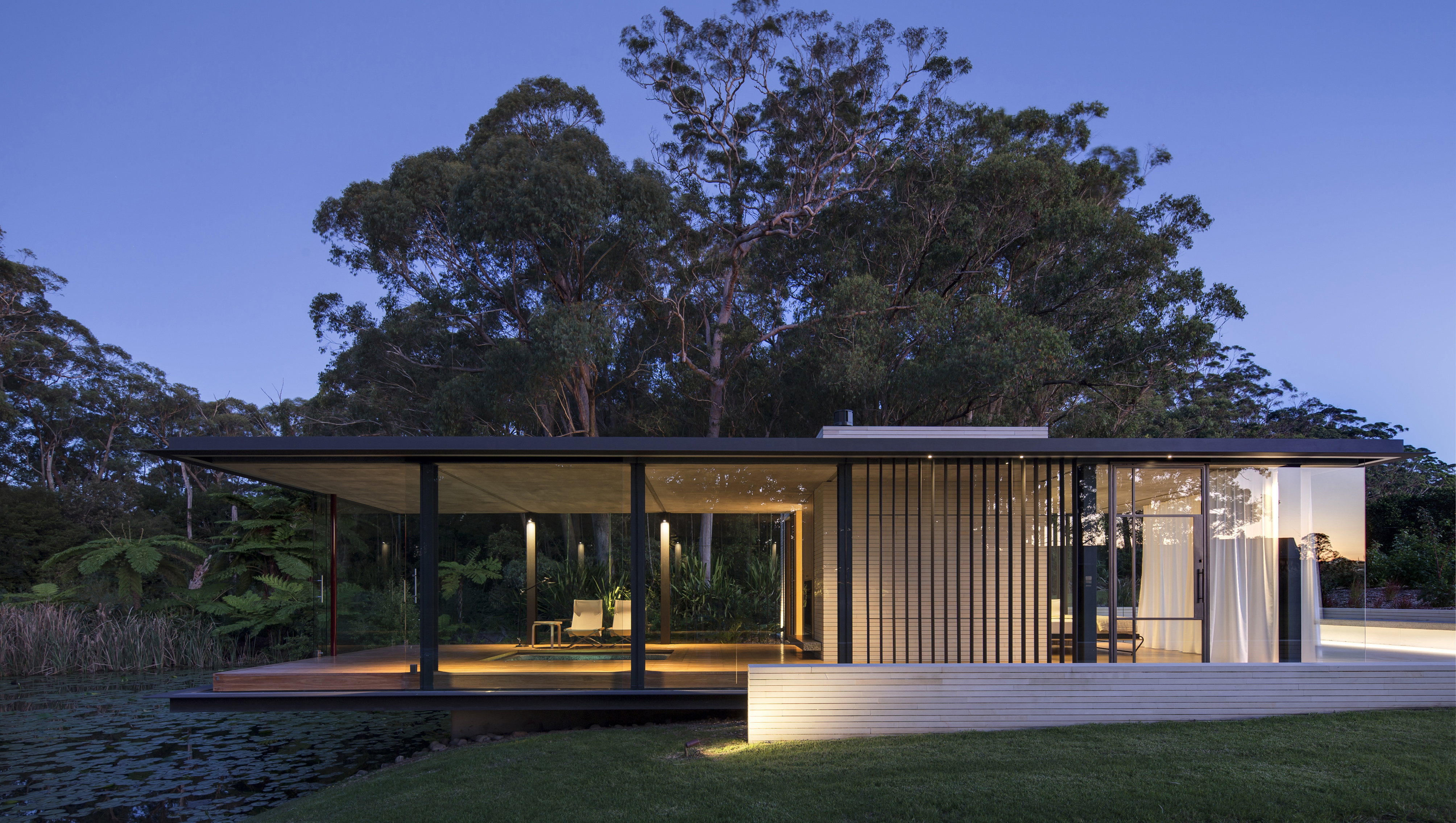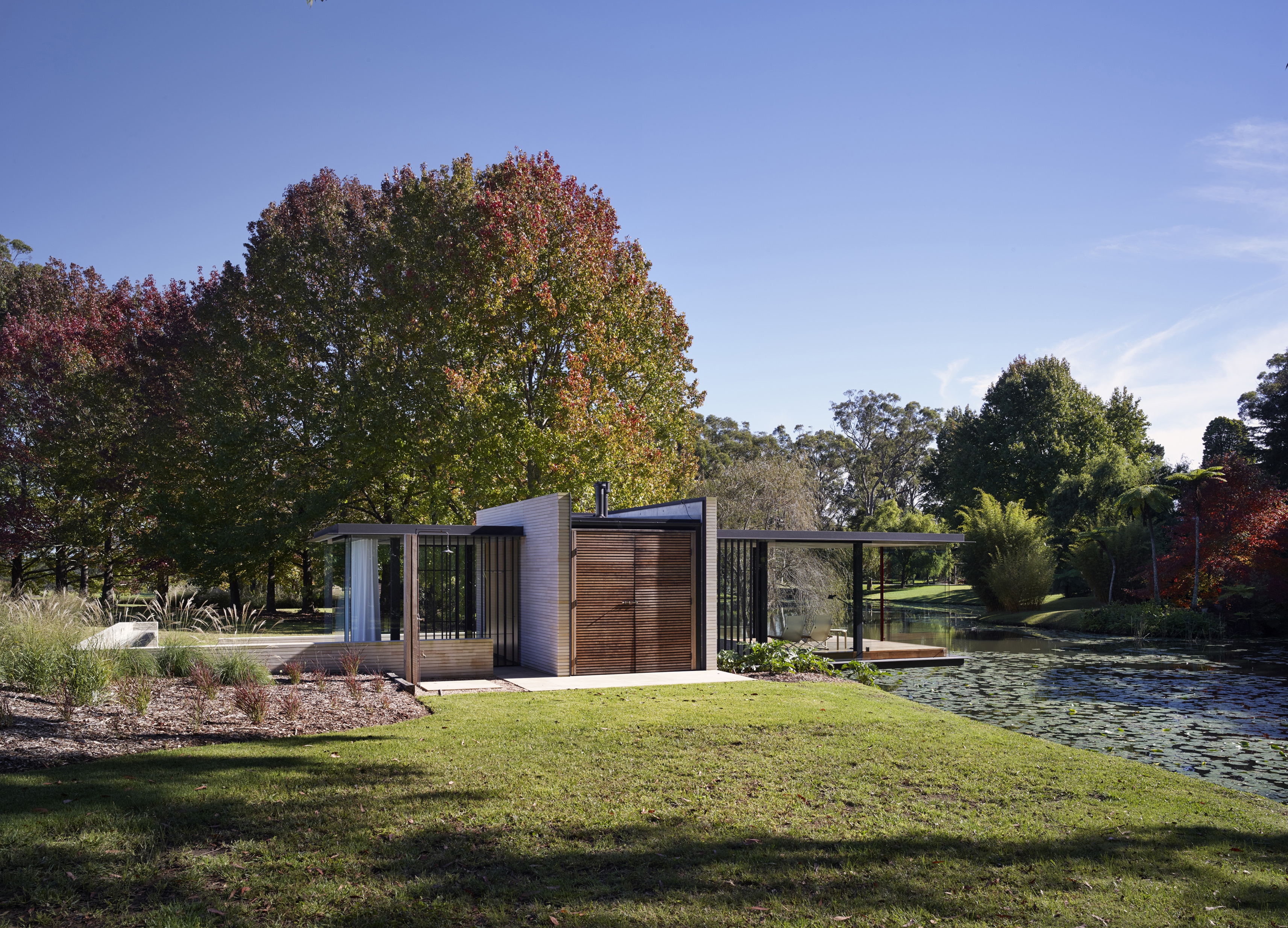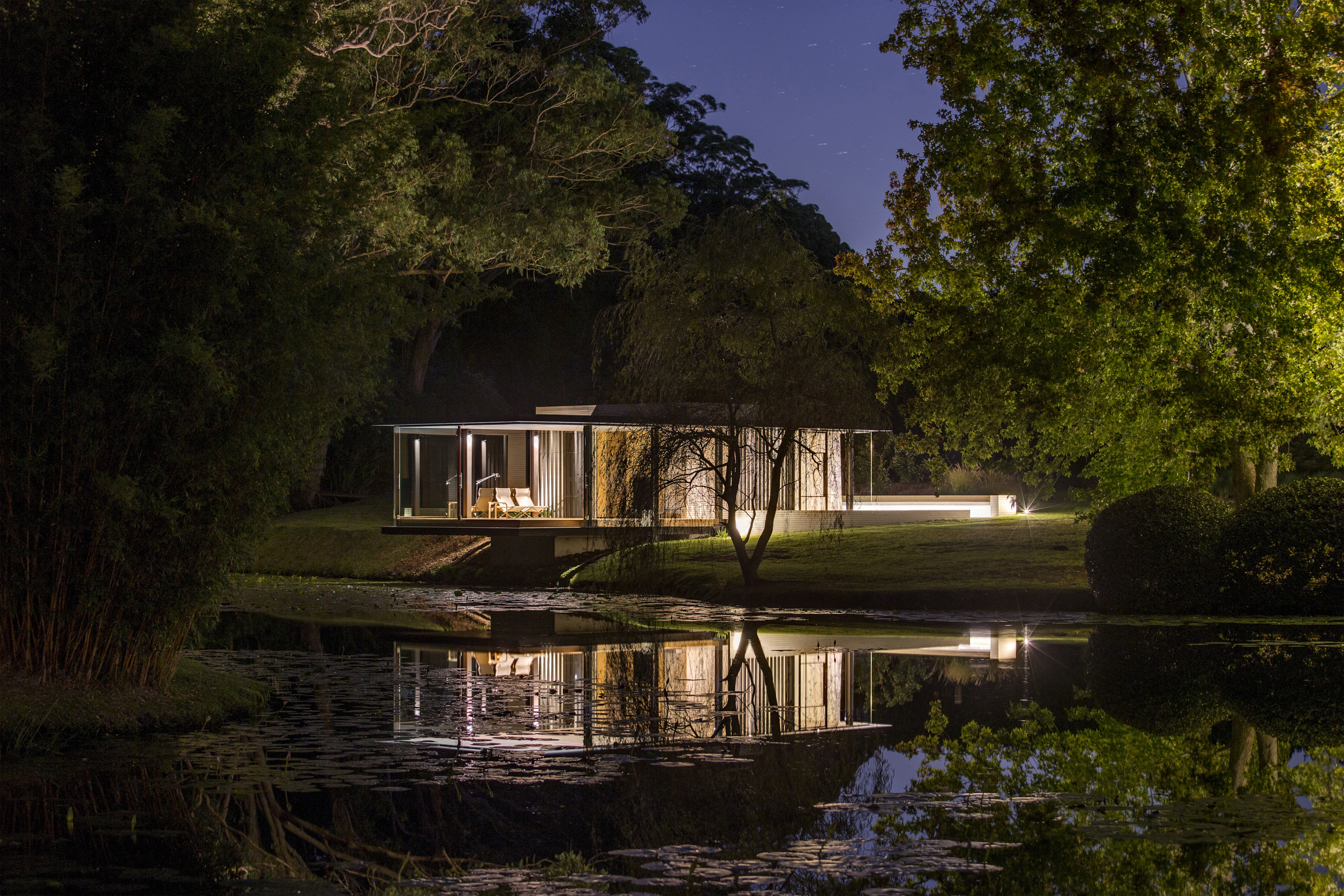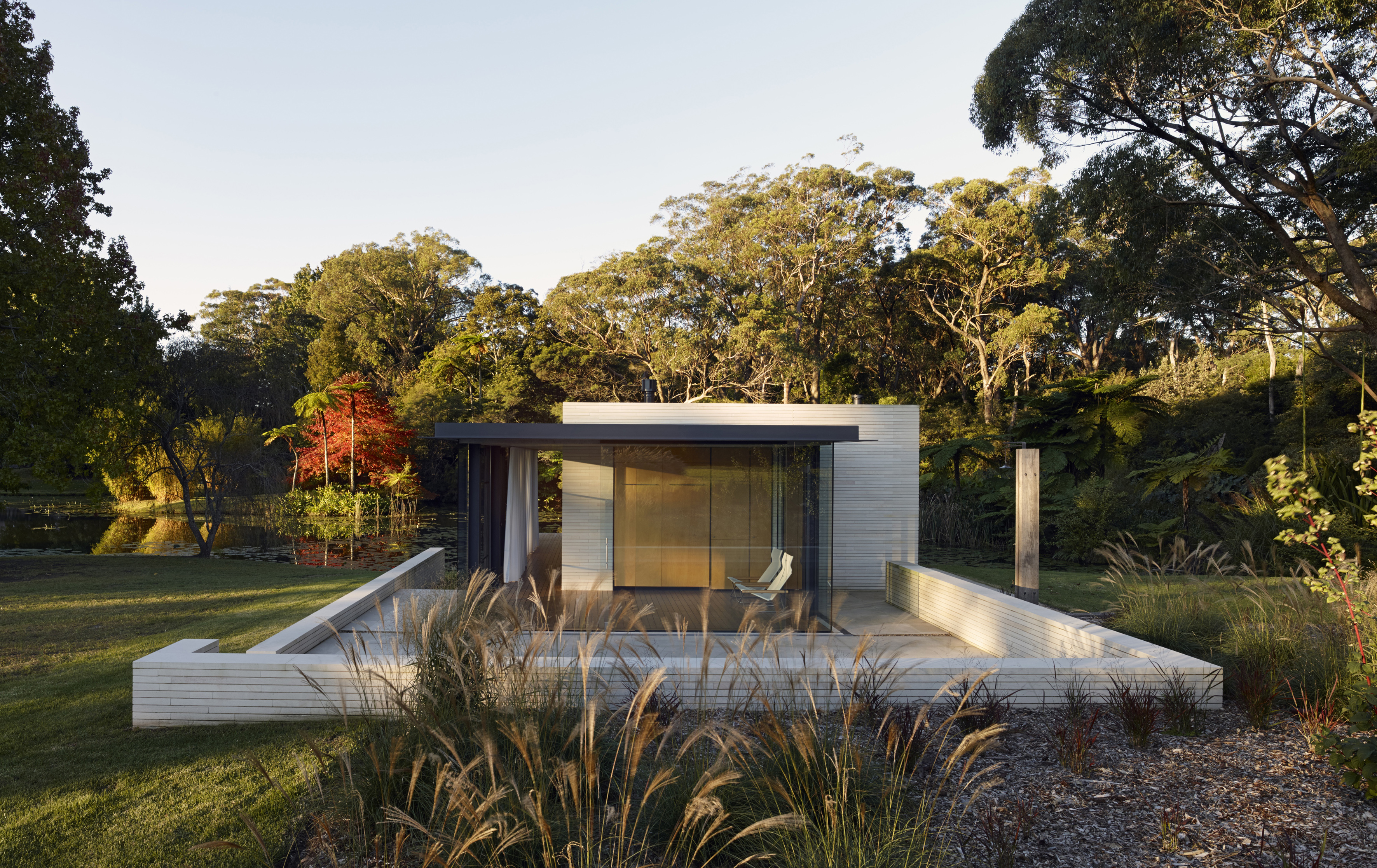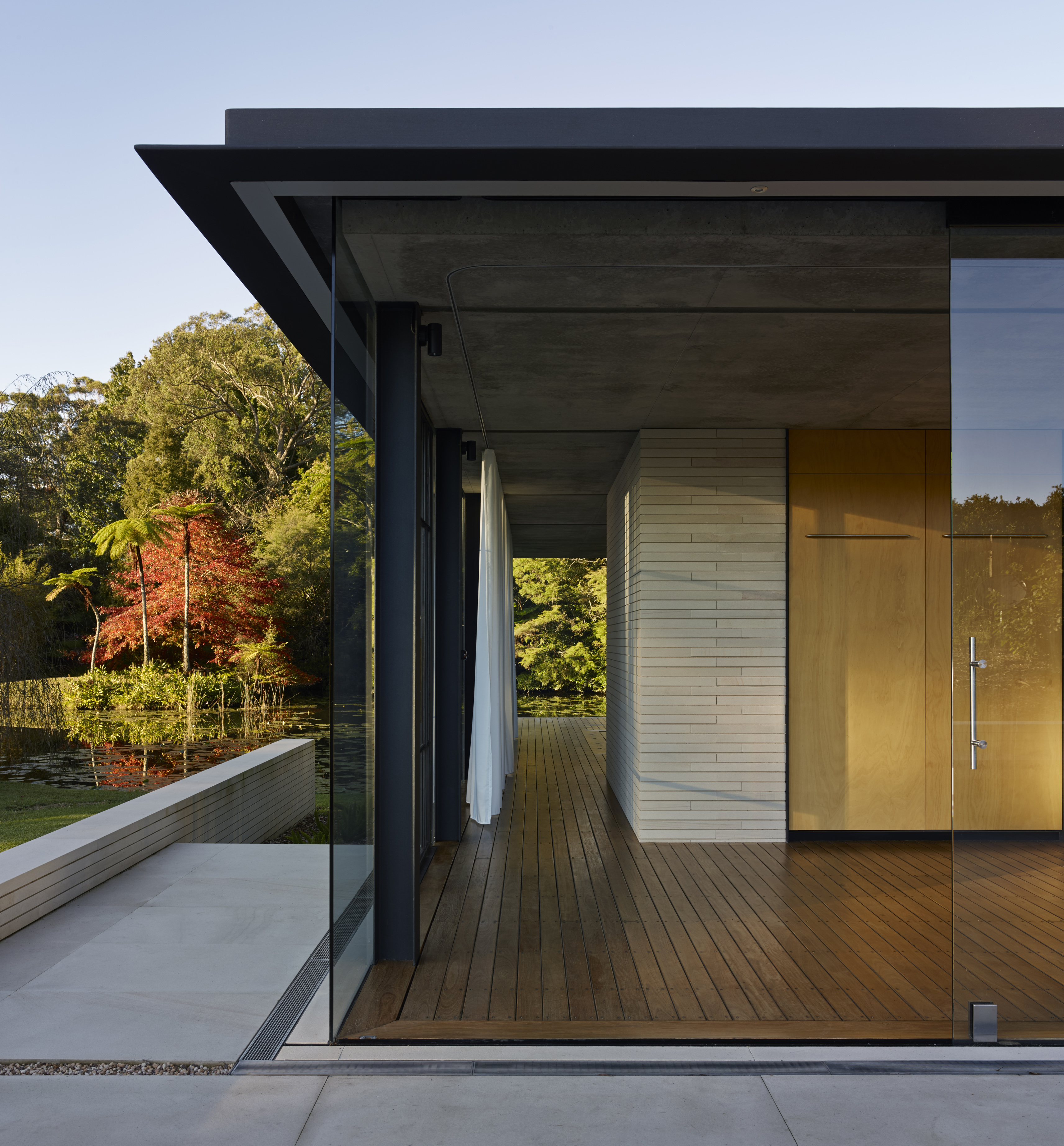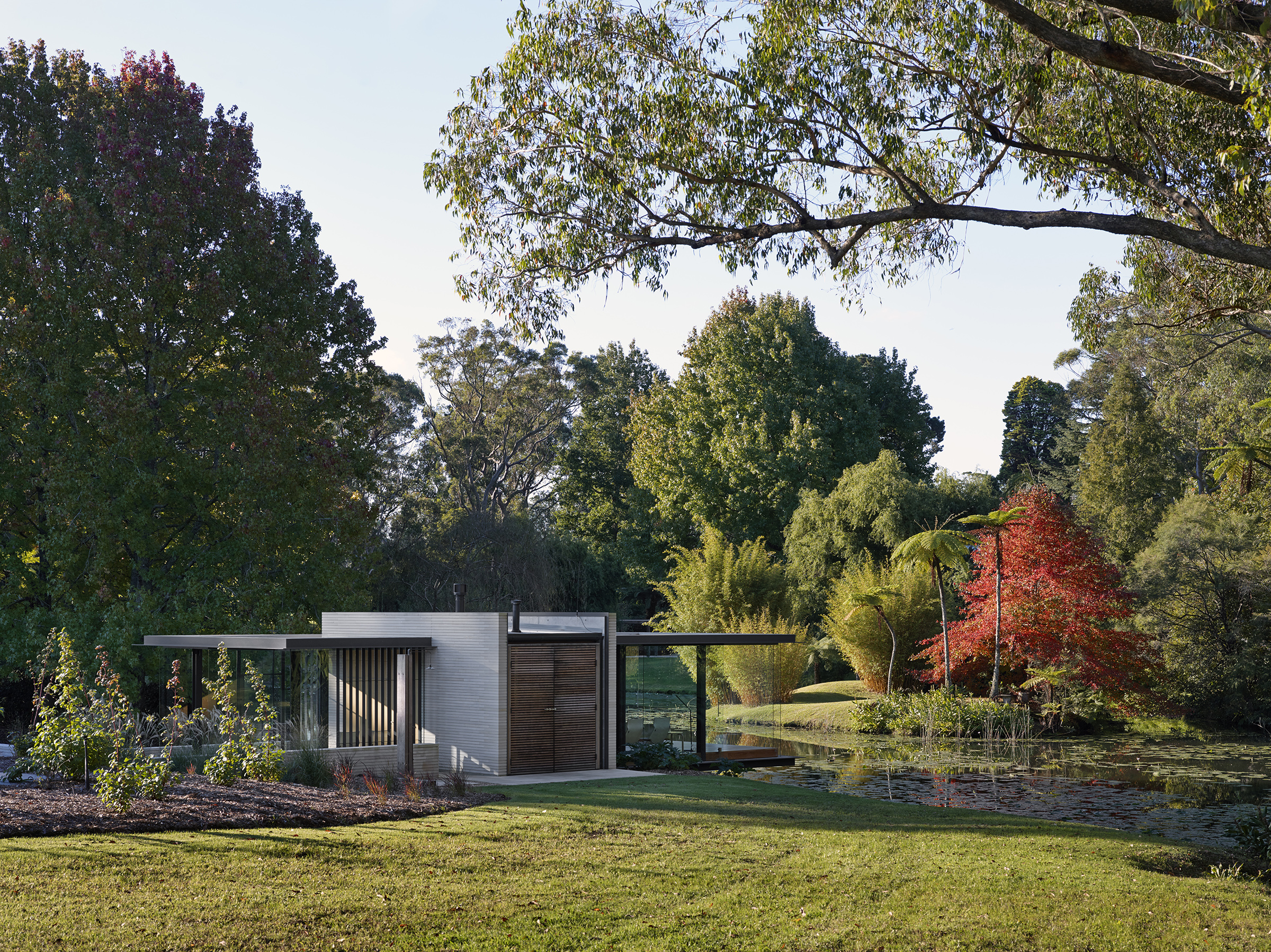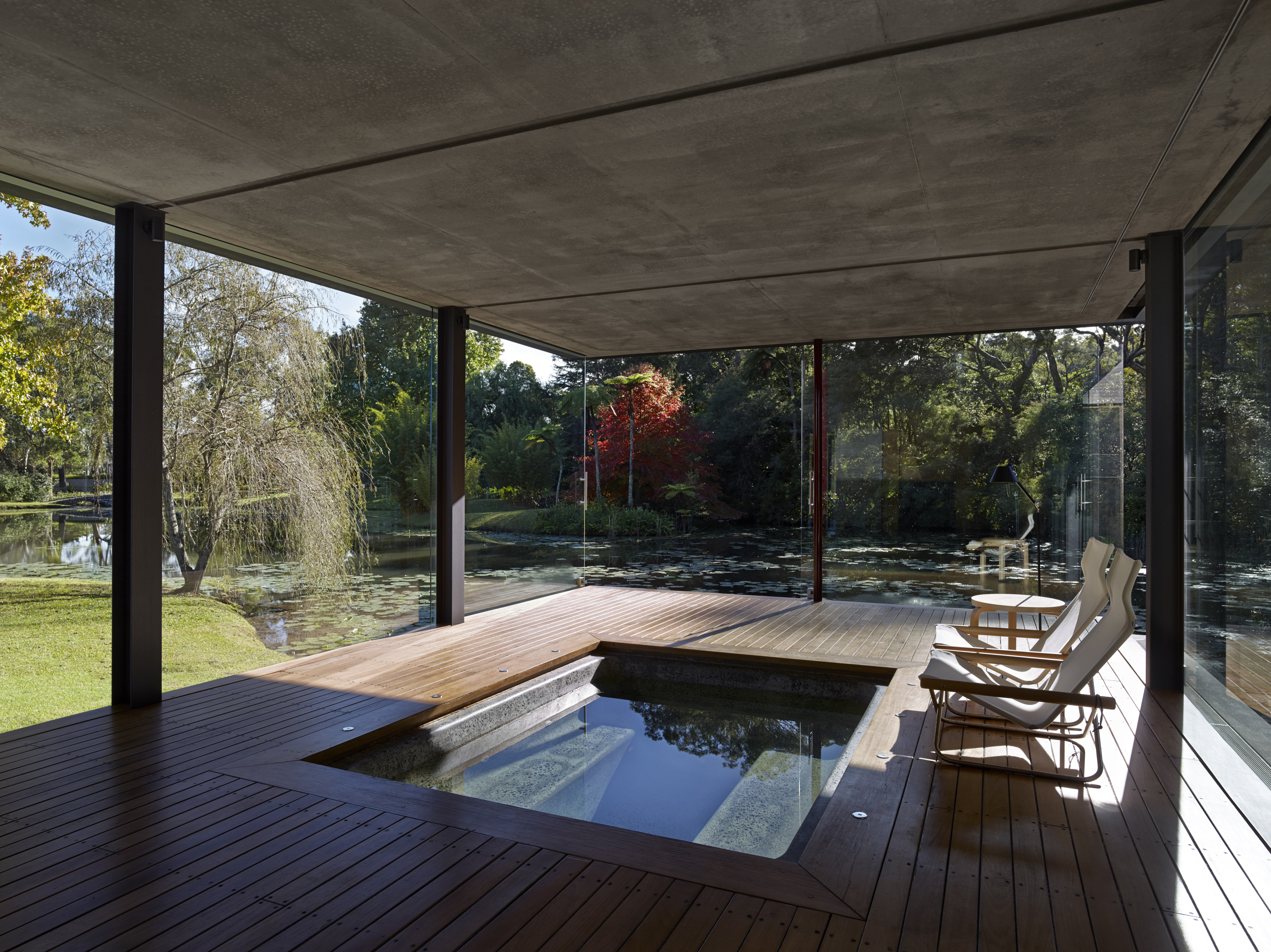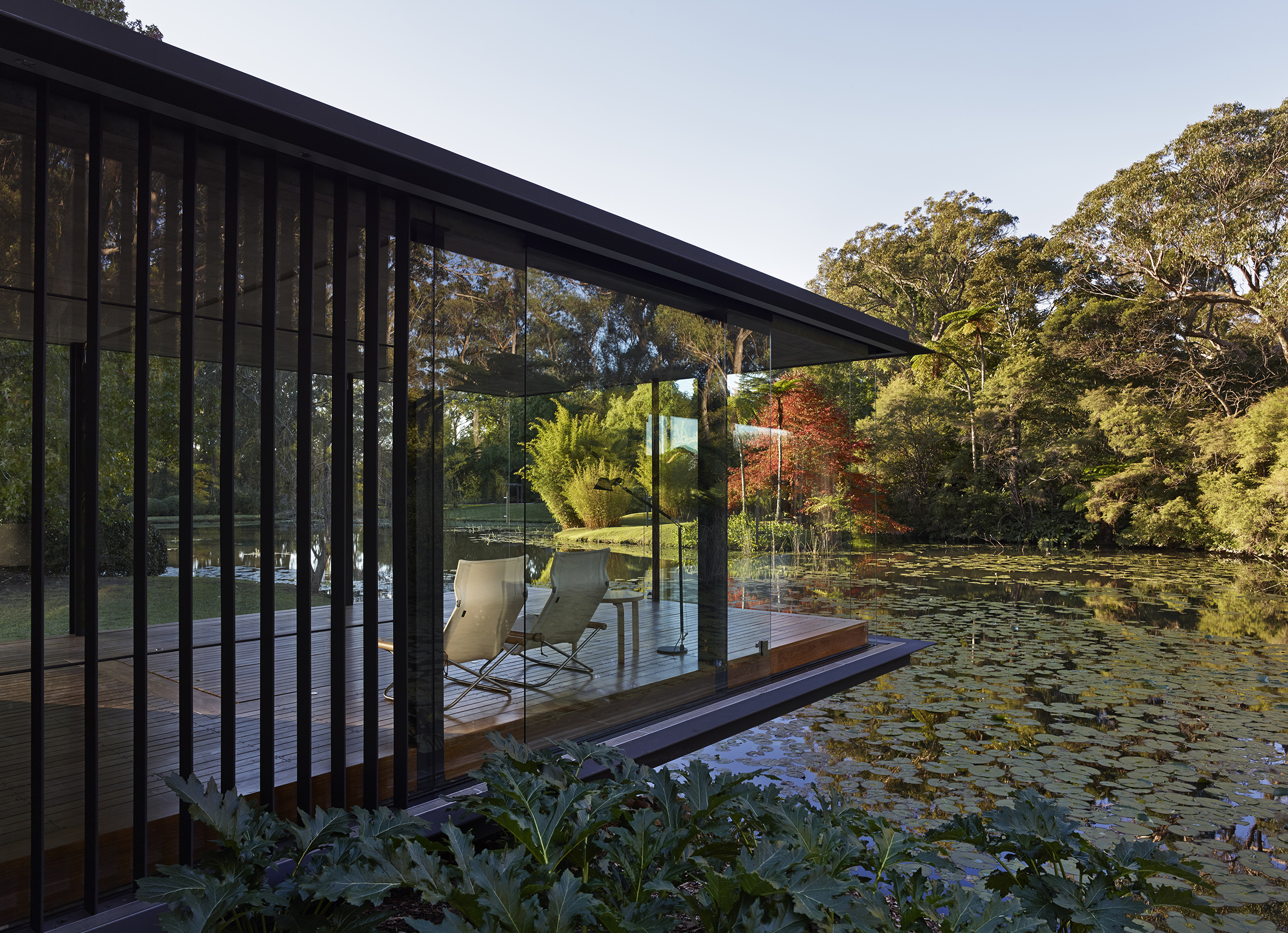Mies van der Rohe might have made a mark on Modernism by pioneering the minimalist, puritan pseudo-functionalism that has proliferated into what we now know as neo-modernism, but his best contributions to architecture were probably his re-conceptions of space: transparency and the democratized floor plan.
The Wirra Willa Pavilion in Somersby, Australia is a “Miesian inspired glass pavilion” that illustrates these two points to a T. Situated in a rural landscape, the home takes advantage of bucolic views with large floor-to-ceiling glass and a terrace that blurs the boundaries between interior living room and exterior porch.
With only a small mass in the center to organize the plan, the house becomes free of obstructions, and empowers the user with an extraordinary amount of flexibility to adapt the space to their needs. There are few walls to define what kind of social or domestic activities will take place and how.
The natural surroundings served as the conceptual framework for the house. For instance, the building’s orientation is aligned to the sun, and the glass panels slide to open up the house to natural cross ventilation and breezes. The house cantilevers over the natural spring-fed dam, and the slope of the site supports different relationships with the ground at each side and entrance.
Besides Mies, the house also evinces strains of other classic modernism. The terrace overhangs like Fallingwater by Frank Lloyd Wright. Black columns arranged in an elongated grid are reminiscent of Philip Johnson’s Glass House, while the building’s tenuous relationship with the sloped ground circle back to Mies’ Farnsworth House. Lastly, the large curtains whisper “Shigeru Ban.” We wouldn’t mind being haunted by such great names in this antipodean estate.
